Mineral supplementation and feeding strategy
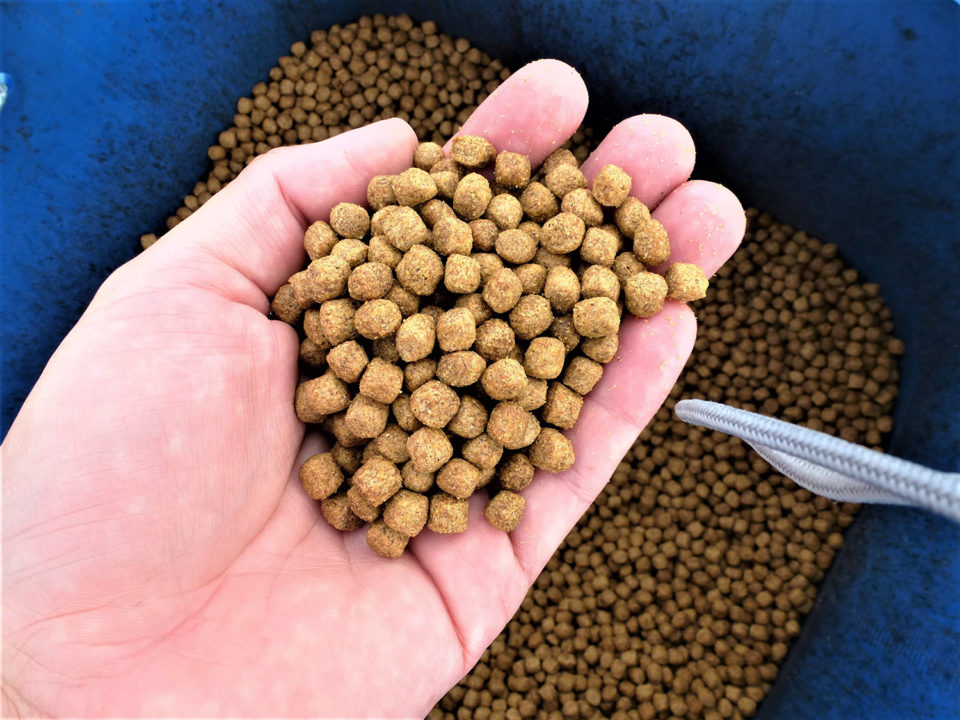
Minerals and vitamins are essential for the formation of tilapia bones and, act as cofactors of enzymes in several metabolic processes, play specific roles in the acid-base balance of the blood, in the transmission of nerve impulses, and in the formation of metalloproteins like hemoglobin. In addition, they are important for the synthesis of defense cells, the integrity of the skin, gills and intestinal mucosa, and contribute to the healing processes. Many minerals and vitamins also have antioxidant properties and modulate fish defense (immune) mechanisms.
https://www.aquaculturealliance.org/advocate/advances-in-tilapia-nutrition-part-1/
Tables 5 and 6 include information on minerals and vitamins, and their recommended minimum levels in complete feeds for tilapia. Supplementing tilapia feeds with minerals and vitamins is particularly necessary in intensive production systems – such as cages, recirculation aquaculture systems (RAS), intensive nursery phases and high-density pond culture – where the contribution of natural food (mainly plankton) is of minor importance. In less intensive, low density production in green water ponds (rich in microalgae), the supplementation of diets with minerals and vitamins is not necessary or could be minimal, as tilapia can complement these nutrients through consumption of natural productivity.
Kubitza, Tilapia nutrition, Table 5
| Minerals | NRC (2011) | Tilapia |
|---|
Minerals | NRC (2011) | Tilapia |
|---|---|---|
| Calcium | Not determined | Not determined |
| Available phosphorous (%) | 0.45 to 0.8 | 0.46 to 0.75 |
| Magnesium (%) | 0.04 to 0.06 | 0.06 |
| Potassium (%) | 0.7 to 0.8 | 0.3 |
| Sodium (%) | 0.6 | 0.2 |
| Iron (mg/kg) | 30 to 150 | 60 |
| Zinc (mg/kg) | 20 to 30 | 80 |
| Manganese (mg/kg) | 2.4 to 13 | Not determined |
| Copper (mg/kg) | 3.0 to 5.0 | 4.0 |
| Selenium (mg/kg) | 0.25 to 3.0 | 0.25 to 0.9 |
| Cobalt (mg/kg) | Not determined | Not determined |
Kubitza, Tilapia nutrition, Table 6
| Vitamins | NRC (2011) | Tilapia |
|---|
Vitamins | NRC (2011) | Tilapia |
|---|---|---|
| A (IU) | 1,000 to 4,000 | 4,150 to 7,000 |
| D (IU) | 500 to 2,400 | 375 |
| E (mg) | 50 to 100 | 20 to 100 |
| K (mg) | Required | 5 |
| C Ascorbic acid (mg) | 25 to 50 | 40 to 80 |
| B1 Thiamine (mg) | 0.5 to 1.0 | 2.5 |
| B2 Riboflavin (mg) | 4 to 9 | 5 to 6 |
| B6 Pyridoxine (mg) | 3 to 6 | 2 to 17 |
| Pantothenic acid (mg) | 10 to 30 | 10 |
| Niacin (mg) | 10 to 30 | 25 to 100 |
| Biotin (mg) | 0.15 to 1.0 | 0.06 |
| Inositol (mg) | 300 to 400 | 400 |
| Choline (mg) | 400 to 1,000 | 800 to 1,000 |
| Folic acid (mg) | 1 to 2 | 0.82 |
| B12 Cyanocobalamin (mg) | 0.01 | Not necessary |
Nutrition and immunity
Complete feeds formulated with focus on immune nutrition help to minimize the dependence on drugs (such as antibiotics) and fish mortality in intensive aquatic farms. Many nutrients essential for growth (amino acids, fatty acids, minerals, vitamins, among others) also contribute to the normal development of fish defense mechanisms.
A variety of other compounds (often called functional feed additives) act as health factors capable of modulating the immune responses in tilapia and other cultivated fish species (Table 7). Such compounds stimulate the production of plasma proteins (Glob/Albu), which are important for the synthesis of antibodies (immunoglobulins); increase the production and activity of lysozyme (Lyso), an enzyme important for the destruction (lysis) of cell walls of pathogenic bacteria; stimulate the synthesis and increase the count of defense cells (leukocytes – leuko) and, in particular, lymphocytes (linfo – which synthesize antibodies), as well as of macrophages, responsible for the phagocytosis (phago – a process in which a macrophage swallows and destroys a pathogen). Other health promoting substances magnify processes that are auxiliary to phagocytosis and, thus, important to restrain the onset and progress of infections (complement system – COMP ACH; reactive oxygenated species – ROS; and antioxidant enzymes and compounds – Anti-OX).
Kubitza, Tilapia nutrition, Table 7A
| Ingredients/nutrients | GAPC | Lysozyme activity | Leukocyte, lymphocyte counts | Phagocytosis activity | Complement system activity |
|---|
Ingredients/nutrients | GAPC | Lysozyme activity | Leukocyte, lymphocyte counts | Phagocytosis activity | Complement system activity |
|---|---|---|---|---|---|
| Whole yeast | Yes | Yes | Yes | Yes | – |
| Yeast metabolites | – | Yes | – | Yes | – |
| Alginates | – | Yes | – | – | Yes |
| Nucleotides | Yes | Yes | Yes | Yes | Yes |
| Selenium | Yes | – | Yes | – | – |
| MOS | Yes | Yes | – | Yes | Yes |
| B-Glucans | Yes | – | Yes | Yes | Yes |
| Probiotics | Yes | Yes | – | – | Yes |
| Vitamin C | – | Yes | Yes | Yes | Yes |
| Vitamin E | – | Yes | Yes | Yes | Yes |
| Organic acids | – | – | – | – | – |
| Allicin (garlic) | Yes | Yes | Yes | Yes | – |
Copy of Kubitza, Tilapia nutrition, Table 7B
| Ingredients/nutrients | ROS | Antioxidant reaction | RSPs | Gut flora | Gut health |
|---|
Ingredients/nutrients | ROS | Antioxidant reaction | RSPs | Gut flora | Gut health |
|---|---|---|---|---|---|
| Whole yeast | Yes | – | Yes | – | – |
| Yeast metabolites | – | Yes | Yes | Yes | Yes |
| Alginates | – | – | Yes | – | – |
| Nucleotides | Yes | – | Yes | Yes | Yes |
| Selenium | – | Yes | – | – | – |
| MOS | – | – | Yes | Yes | Yes |
| B-Glucans | Yes | – | Yes | – | – |
| Probiotics | – | – | Yes | Yes | Yes |
| Vitamin C | Yes | Yes | Yes | – | – |
| Vitamin E | – | Yes | Yes | – | – |
| Organic acids | – | – | Yes | Yes | – |
| Allicin (garlic) | Yes | – | Yes | – | – |
Many compounds also improve gut health (increase mucus secretion and the numbers and height of intestinal villi, while reducing gut inflammation) and modulate the composition of gut flora, reducing the number of potentially pathogenic Gram-negative bacteria (such as Aeromonas, Pseudomonas, Plesiomonas, Edwarsiella and Vibrio, among others) and increasing the population of beneficial Gram-positive bacteria (such as Lactobacillus). Probiotics (live bacterial cells) added to feed can also be used to modulate gut microflora and to improve immune responses in aquatic fish.
Among the main feed additives used to modulate the immunological response of tilapia and other fish species are the products obtained from yeasts and their fermentation metabolites (prebiotics), including the nucleotides, MOS (mannanoligosacharides) and B-glucan. Nucleotides are essential for the formation of cells (muscle, blood cells, defense cells such as lymphocytes, macrophages) and are fundamental in the development, maturation and integrity of intestinal mucosa, making it difficult for pathogenic bacteria to go through the gut barrier. Diet supplementation with nucleotides is important, particularly in the early stages due to the fast development and growth of postlarvae and fry. Nucleotides can also greatly improve the quality of pre- and grow-out diets, which are usually formulated mostly with plant ingredients that often lack in nucleotides. Nucleotides also favor the development of beneficial bacteria like Lactobacillus and Bacillus to the detriment of pathogenic bacteria.
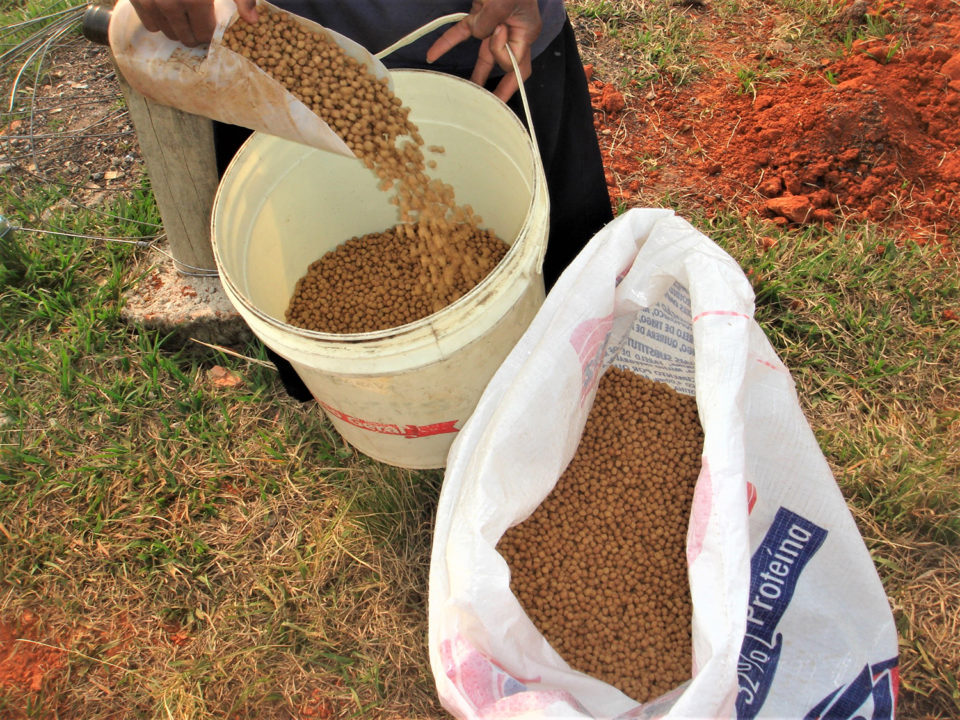
Mannanoligosaccharides (MOS) and B-Glucans are compounds obtained from the fragmentation of the cell walls of yeasts. MOS increases mucus production and improves the integrity of the intestinal epithelium, making it difficult for pathogenic bacteria to colonize and penetrate through the mucosa and cause infection. In addition, the Gram-negative bacteria bind to the MOS microparticles and are flushed out of the intestine along with the feces, modulating the microbial population in the Gut. This is called “prebiotic effect,” in which pathogenic Gram-negative bacteria are removed, allows the increase in the numbers of beneficial Gram-positive bacteria. On the other hand, B-glucans modulate several defense mechanisms and reinforce the immune response of tilapia. B-Glucans added to feeds containing mycotoxins (toxins produced by fungi) act as a toxin binder as well as an immuno-modulator, lessening the detrimental effect of such mycotoxins and improving the immunological response of tilapia.
The minimum requirement for Vitamin E (α-tocopherol) of Nile tilapia based on growth has been determined to be 20 to 40 mg/kg of feed. However, higher dietary doses (above 550 mg/kg) can further improve the fillet properties (cohesiveness, resilience and texture) and the serum antioxidant capacity of tilapia.
Vitamin C (ascorbic acid) is important for collagen synthesis (formation of bone matrix, skin and healing processes). There are studies with some fish species that demonstrate that, at a high dietary supplementation (1,000 to 2,000 mg/kg), vitamin C can improve the immune response and increase fish resistance to pathogens. The same occurs with selenium, which at doses four to five times above the recommended minimum for optimum growth (0.25 mg/kg of feed) seems to improve the resistance of some species of fish to bacterial infections.
Organic acids and their salts – including citric acid and sodium citrate, formic acid or potassium or sodium diformate, lactic acid or sodium lactate, propionic acid or calcium propionate, among others) – can improve protein and minerals utilization (digestion) and thus fish growth and feed efficiency. In addition, organic acids can modulate bacterial population in the anterior gut of fish by killing Gram-negative pathogenic bacteria. This usually improves gut microflora and can minimize the occurrence of bacterial outbreaks.The inclusion of 0.2 to 0.5 percent potassium diformate in feeds improved protein retention, growth and feed efficiency of tilapia (Wing-Keong et al 2009; Elala and Raaga, 2015). In addition, there was a reduction in the count of Gram-negative bacteria in feces or attached to gut epithelium. Three studies demonstrated that the inclusion of potassium diformate in feeds significantly increased the resistance of Nile tilapia to infection of Vibrio anguillarum, Streptococcus agalactiae (Fig. 2) and Aeromonas hydrophilla.
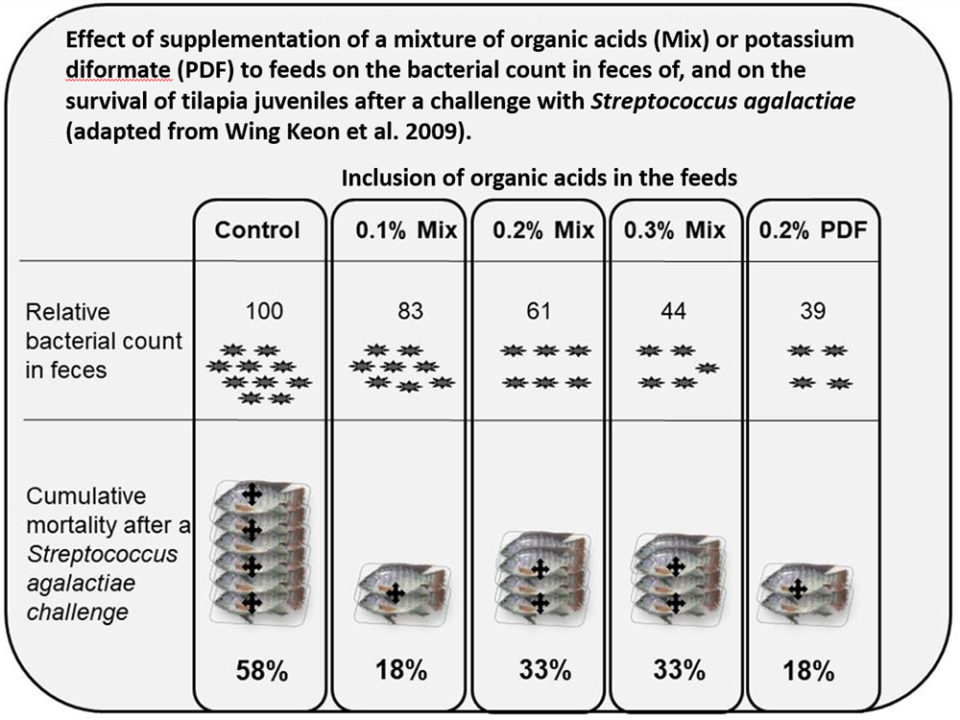
Allicin (from garlic) is an anti-cancer compound which has an immunomodulating action in various animals and fishes. Nile tilapia juveniles (25 grams) tilapia fed diets containing 0.5 percent of garlic had higher leukocyte counts, higher lysozyme activity, and more intense phagocytosis and respiratory burst than fish that received feeds without garlic. In another study, the inclusion of 3 percent garlic in the diets also elevated the lymphocyte count and the adhesion of neutrophils and improved the survival of juvenile Nile tilapia. The fish that were fed for three months on a feed containing garlic had lower mortality after an experimental infection with the pathogenic bacteria Aeromonas hydrophila, both at the end of summer and at the end of winter. Many other plant-derived essential oils or extracts (phytotherapeutic compounds) have been demonstrated to enhance the immune response of tilapia and other fish species and may be important tools in the near future for fish nutritionists to improve the immune effects of commercial feeds.
Feeding strategies
Fig. 3 shows a feeding program suggested for tilapia farmed in cages in Brazil. Fry are commonly fed on 55 to 45 percent CP powdered or micropelleted feeds at a daily allowance between 30 to 20 percent of their body weight, divided into eight to six meals per day. At the end of the sex reversal phase, with fish at about 1 gram, the daily feed allowance is reduced to 15 to 12 percent of body weight, divided into six to five meals per day. Nowadays, there are 0.3 to 0.8 mm micropellets with 40 to 45 percent CP that can be used earlier in the sex reversal stage. As fingerlings grow and the production phases progress, pellet size increases, the dietary protein levels decrease slightly and the daily feeding rate and the number of meals are gradually reduced.
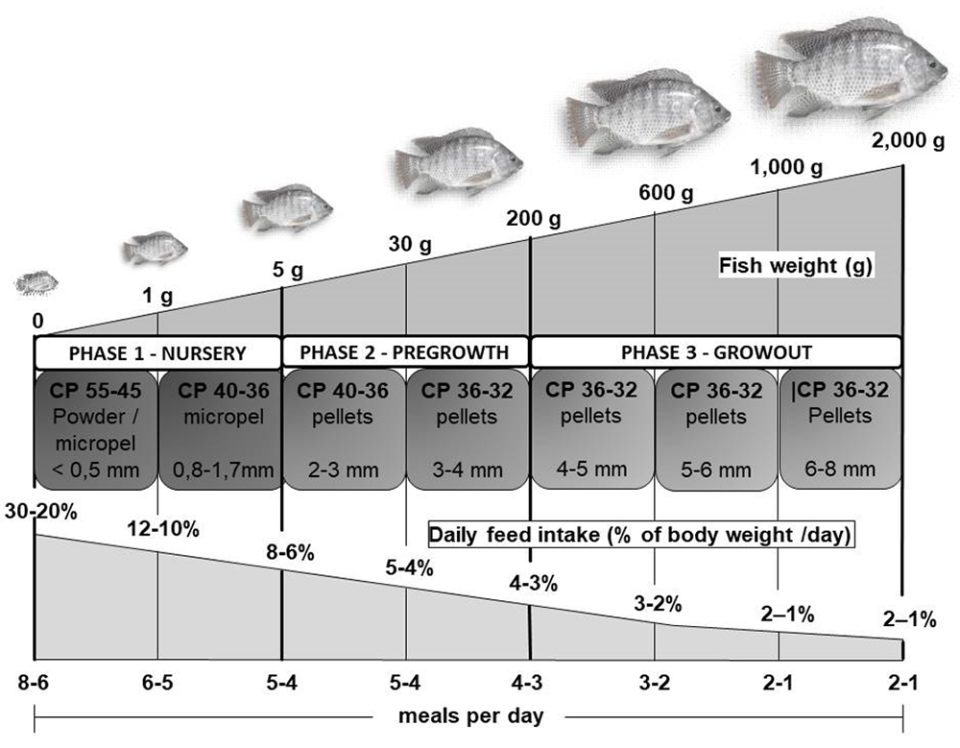
Regarding the interval between meals, two studies have shown that tilapias of 150 to 180 grams at a water temperature of 28 degrees-C take four to five hours to empty half of their stomach contents, making enough room in the stomach to accommodate the next meal. Fish fed every two hours had gastric overload and end up not digesting or assimilating feed very well. The bigger the fish, the slower the feed transit through the digestive tract. Therefore, it is expected that 500- to 800-gram tilapia take more than four to five hours to empty half of their stomachs. Thus, between 06:00 and 18:00 – a range of 12 hours – it would be ideal to offer a maximum of three meals for fish 150 to 200 grams, and certainly only two meals for fish 800 grams and up. Fish between 5 and 100 grams should be fed at shorter intervals – every two or three hours – thus receiving a larger number of meals per day.
Balance between weight gain and feed conversion
“The more the fish eats, the more weight it gains, but the worse is it feed conversion ratio (FCR).” This is a basic principle of feed management that fish growers must keep in mind. Table 8 presents the results of studies that evaluate the effect of feeding rates on the performance of 500-gram tilapia. Such a relationship between feed consumption, and growth and FCR has also been observed in many other fish species. Therefore, tilapia farmers should find an economic balance between growth rate and FCR. For small fish – below 100 to 200 grams – farmers should prioritize growth and feed their fish three to four times per day to close to satiation levels.
Fast growth in the initial phase helps reduce the time the fish remain susceptible to predation (by insects and small birds during the fry stages, and by larger birds and bats during the fingerling and juvenile stages). Also, up to 100- to 200-gram fish, the FCR still does not amount to much in the final production cost, as only a small quantity of feed is used in this phase. However, more than 80 percent of the feed is normally consumed from 200 grams to the commercial weight (1 kg or above). In order to balance weight gain and feed conversion in this phase, fish should be fed at 70 to 80 percent of their voluntary (maximum) consumption. In other words, fish should always be left wanting more feed after each feeding.
Kubitza, Tilapia nutrition, Table 8
| Feed rate | FCR | Relative weight gain (%) | Ration cost (US$/kg of fish) |
|---|
Feed rate | FCR | Relative weight gain (%) | Ration cost (US$/kg of fish) |
|---|---|---|---|
| 100% all fish could eat (satiation feeding) | 2.40 | 100.0 | 1.08 |
| 90% satiation | 2.10 | 98.2 | 0.95 |
| 70% satiation | 1.70 | 92.0 | 0.77 |
| 50% satiation | 1.60 | 61.3 | 0.72 |
Ideal pellet size
Tilapia efficiently filter small particles (planktonic microalgae and microcrustaceans) present in the culture water. Although tilapia can place large size pellets in their mouths, they end up having difficulty swallowing them, as tilapia have no teeth capable of crushing such pellets. Many producers believe that the larger the pellets, the less energy tilapia spend feeding. But it doesn’t work like that. Pellets that are too large are not consumed immediately. Instead, they are kept inside the fish mouth while being moistened, softened, scraped and slowly consumed. This results in some selection of the feed particles to be ingested, but an unnecessarily longer exposure of feed pellets to water.
Considerable loss of water soluble nutrients – such as complex B vitamins and ascorbic acid, proteins and free amino acids, minerals and carbohydrates – may result. There are technical reports that extruded feed may lose more than 90 percent of some B vitamins and nearly 50 percent of vitamin C after 20 minutes in water. A study by Azaza et al. (2010) determined the optimum pellet diameter for tilapia juveniles to be between 3 and 20 grams. They concluded that pellets of about 23 to 28 percent of the fish mouth’s width maximize weight gain and feeding efficiency of tilapia. Although the largest fishes evaluated in that study were only 20 grams, most likely the relationship between the ideal pellet size and mouth width should not vary too much for larger tilapia. Based on data on fish weight and mouth gap (or width) collected at different sites, and considering an ideal pellet size of 25 percent of tilapia’s mouth width, we prepared the data shown in Fig. 4.
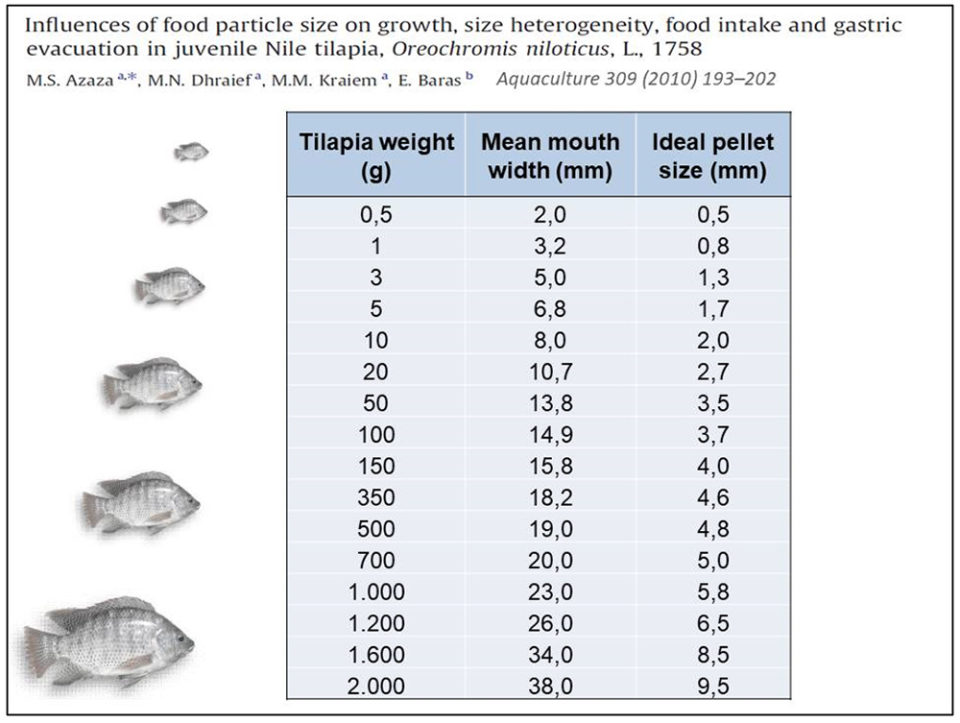
Flesh quality
Aquaculture products account for nearly over 50 percent of all seafood available for human consumption. Thus, aquaculture has the challenge and responsibility of delivering products with sensory and nutritional quality at least comparable to those from fisheries. Through adjustments in feed formulas, it is possible to alter some sensory characteristics – such as color, flavor and texture – as well as to change some of the nutritional characteristics (fatty acids) and mineral enrichment of flesh of farmed fish.
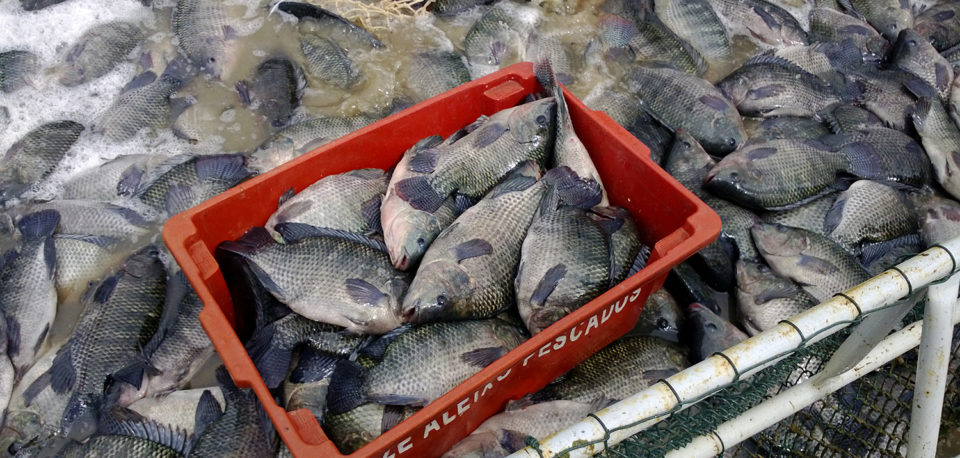
Specifically for tilapia, a recent study by Stoneham et al. demonstrated the possibility of enriching fillets with omega-3 FAs, in particular DHA and EPA, by adding to feeds marine fish oil or a commercial algae meal Schizochytrium sp. rich in DHA (Algae Rich®, Alltech). Tilapia fed for eight weeks with a diet containing 8.8 percent Algae Rich® showed concentrations of omega-3 fatty acids around 390 mg/100 grams of fillet, compared with 350 mg/100 grams of fillet of fish fed a diet with 5 percent fish oil, and just 130 mg/100 grams of fillet from tilapia fed a control diet without addition of omega-3 FAs. The omega-3 FAs specially benefit the cardiovascular and brain health of humans.
Several health agencies around the world recommend a daily intake of 250 to 500 mg of omega-3 FAs for adults. This demand would be met by daily consumption of 65 to 130 grams of fillet coming from tilapia fed omega-3 enriched feeds, compared to 190 to 370 grams of fillet from tilapia fed feeds without omega-3 enrichment.
Another study demonstrated the possibility of enriching tilapia fillet with selenium (Se) by increasing the supplementation of organic or inorganic sources of this mineral in diets. Selenium is an essential micromineral necessary for proper functioning of the immune system in humans and animals, necessary for the production of thyroid hormones and for normal activity of sperm cells. Selenium is a component of enzymes with antioxidant functions that protect cell membranes from the action of reactive oxygenated substances and free radicals released during an infectious process or inflammation. An increase in the daily intake of Se appears to be associated with a reduction in the risk of cancer in humans.
Tilapia that have been fed with diets enriched with organic Se (Selplex, Alltech) at a dose of 1 mg Se/kg feed (four times the level recommended by NRC) had 25 ug de Se/100 gramd of fillet, respectively, compared with 15 ug Se/100 grams in tilapia fillets coming from fish fed diets without a Se supplementation or supplemented with only 0.25 mg Se/kg (Nguyen et al 2019). A source of organic Se (Selplex) provided Se levels in fillets 32 percent higher than an inorganic source of Se (sodium selenite). Health agencies recommend a daily intake of 70 ug Se for human adults. Thus, to satisfy such daily requirement it would be necessary to consume 280 grams of fillet from tilapia raised on feeds supplemented with organic selenium at 1 mg/kg, compared with 470 grams of fillet from tilapia fed a diet supplemented with only 0.25 mg Se/kg, the level of Se supplementation suggested by the NRC (2011) for tropical fishes.
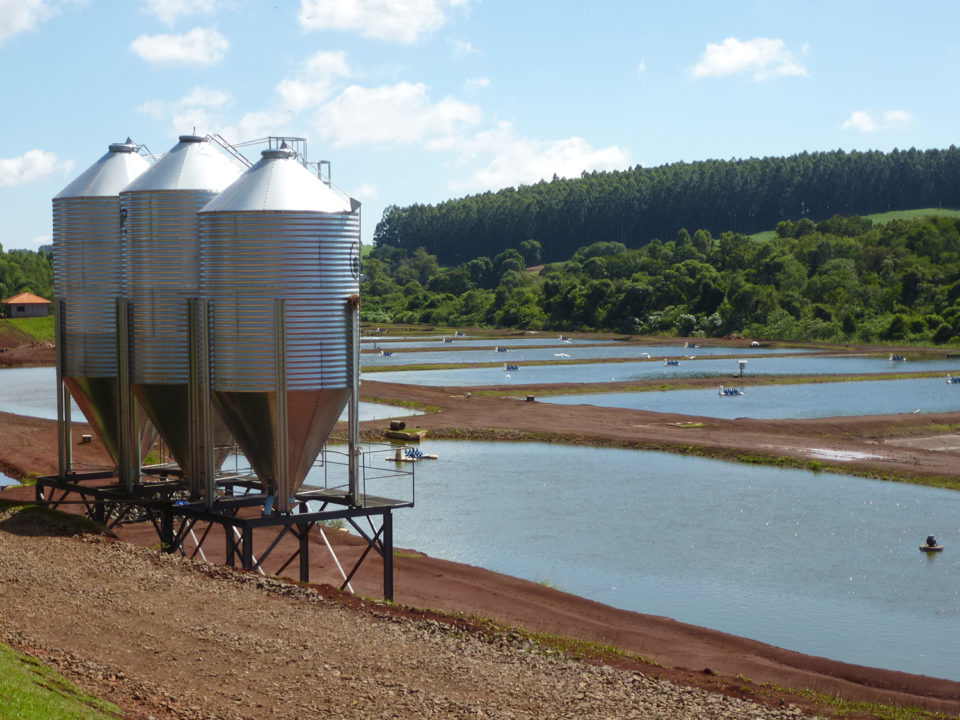
Perspectives
The identification of constituents and health factors will enable an increasingly precise nutritional refinement of feeds for tilapia and other fish species. Diets designed for strengthening the defense mechanisms will considerably reduce fish losses that are presently common in tilapia intensive production facilities, particularly in cage culture.
Nutritional studies are using more and more the nutrigenomics (the science that studies the relationship between human genome, nutrition and health) tools, a line of research that verifies the influence of a particular ingredient, nutrient or substance on the expression of genes that determine growth and immunological responses. This will provide more complete answers about the benefits from adjustments of feed composition and from the use of specific additives.
Consequently, aquaculture professionals and researchers worldwide have the challenge to advance on the field of the immune nutrition, identifying new substances that may enhance growth and health of aquatic species. Such advances will support the formulation of high-quality feeds to further boost performance and health of fish and farmers profits.
References available from author.
Now that you've reached the end of the article ...
… please consider supporting GSA’s mission to advance responsible seafood practices through education, advocacy and third-party assurances. The Advocate aims to document the evolution of responsible seafood practices and share the expansive knowledge of our vast network of contributors.
By becoming a Global Seafood Alliance member, you’re ensuring that all of the pre-competitive work we do through member benefits, resources and events can continue. Individual membership costs just $50 a year.
Not a GSA member? Join us.
Author
-

Fernando Kubitza, Ph.D.
Acqua Imagem Services in Aquaculture
Jundiaí, SP, Brazil
Tagged With
Related Posts

Health & Welfare
A look at tilapia aquaculture in Ghana
Aquaculture in Ghana has overcome its historic fits and starts and is helping to narrow the gap between domestic seafood production and consumption. Production is based on Nile tilapia.
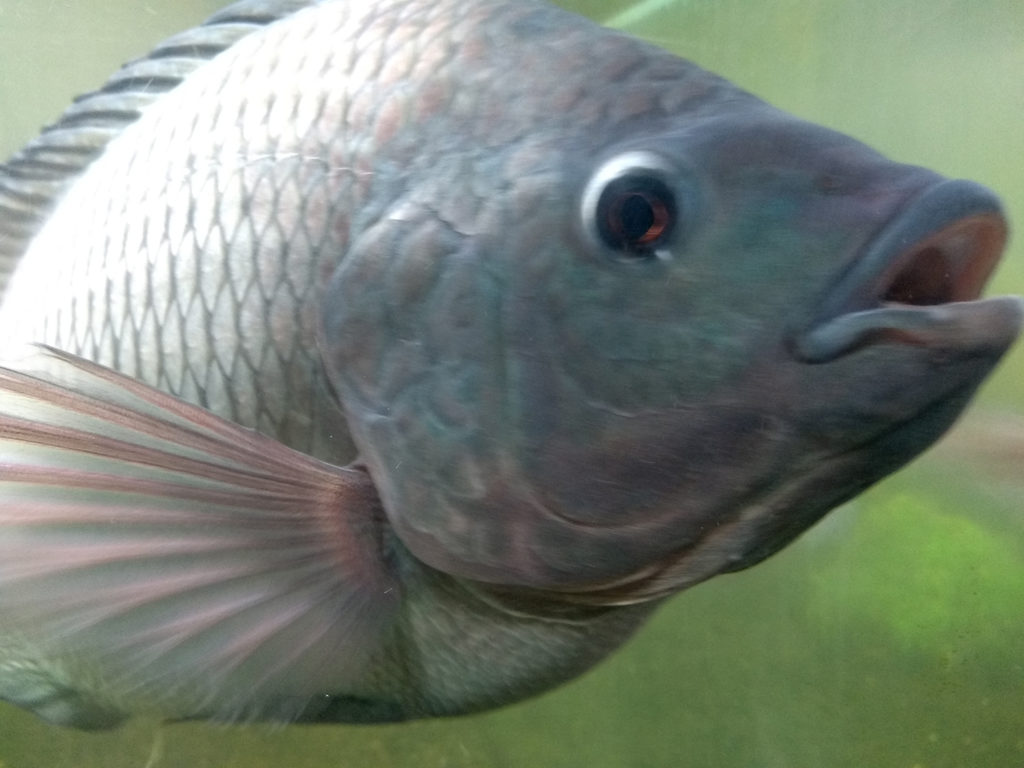
Health & Welfare
Advances in tilapia nutrition, part 1
This two-part review brings together scientific and field advances in tilapia nutrition and feeding to better support the formulation of feeds for better production performance.
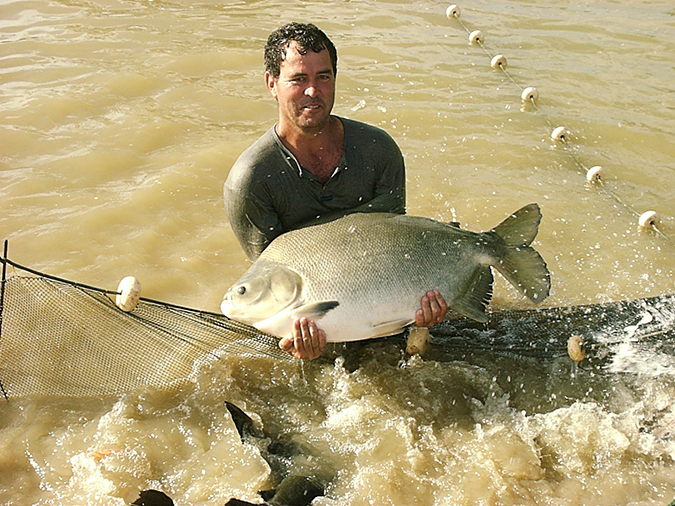
Intelligence
Brazilian aquaculture: Constraints and challenges (Part 1)
The Brazilian aquaculture industry has been growing steadily during the last two decades. Despite facing a number of challenges it is looking at continued growth and a larger role in the export markets.
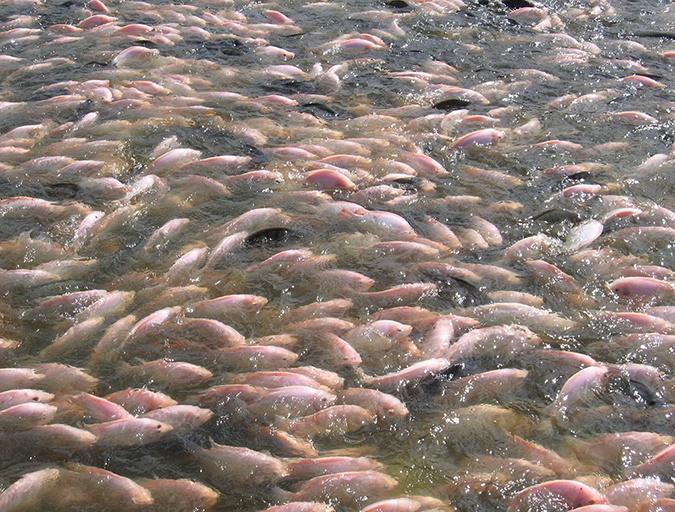
Health & Welfare
Common salt a useful tool in aquaculture, part 1
The preventive use of common salt (sodium chloride) by commercial producers of freshwater fishes has many benefits, including helping with the routine prevention of losses due to diseases, stress and mishandling during transport, harvesting, grading, counting, weighing and induced spawning.


